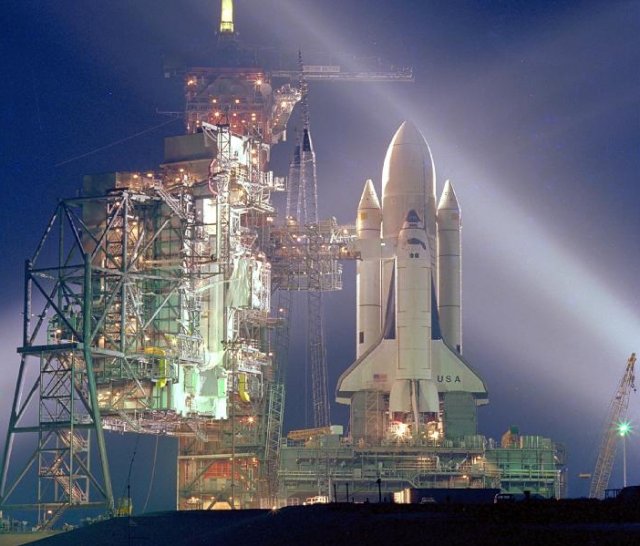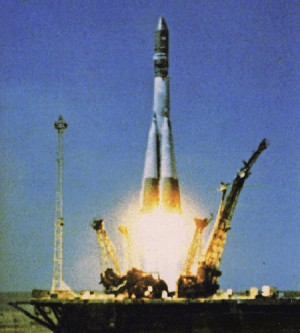Happy Birthday, Manned Spaceflight!
Ars Technica » Scientific Method 2013-04-12

April 12th is a pretty momentous day for space nerds. Fifty-two years and one day ago, a mere handful of test pilots had flown above 100,000 feet. In 1960, Joe Kittinger jumped out of a balloon 102,800 feet above New Mexico. A year prior to Kittinger’s jump, "Joe" Jordan flew an F-104 starfighter to 103,389 feet, and in 1956 Iven Kincheloe took the X-2 as high as 126,283 feet. But the border between our atmosphere and space (known as the Karman line) was two and half times higher, 60 miles (or 328,000 feet) above ground. The USSR and USA had launched a number of satellites above the Karman line, but April 12th, 1961 was the first time one of these rockets had a human being sitting in it.
At a little after 9am local time, Yuri Gagarin became the first person in history to leave our atmosphere, riding Vostok 1 into orbit. The modified R-7 ICBM took off from the Tyura-Tam ICBM test site, located on the remote and desolate Khazak Steppe, and 108 minutes later Gagarin returned to Earth, landing nearly 1,000 miles away, near the Russian city of Engels. If 1957’s launch of Sputnik 1 had started the space race between the US and USSR, Vostok 1 and the first manned orbit solidified the Soviets’ position in the lead. The next decade would see tremendous progress by both nations, culminating in 1969, when Neil Armstrong set foot on the moon.
Gagarin’s flight alone is enough reason to celebrate April 12th, but 20 years later to the day, astronauts John Young and Bill Crippen took the Space Shuttle Columbia on its maiden voyage. The Space Shuttle, unlike all the manned spacecraft before it, was reusable, and with claims of routine, weekly launches costing as little as $20 million a shot, it was supposed to usher in a new era of spaceflight.
Read 7 remaining paragraphs | Comments
